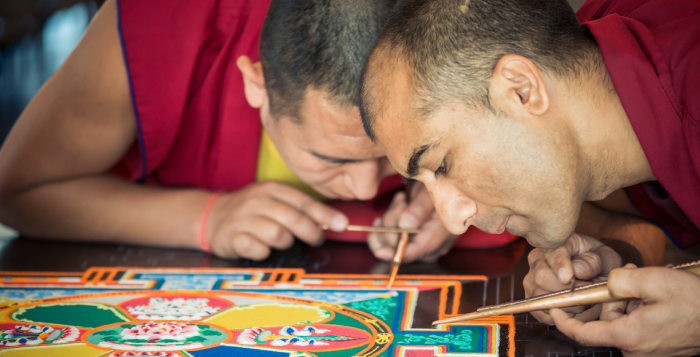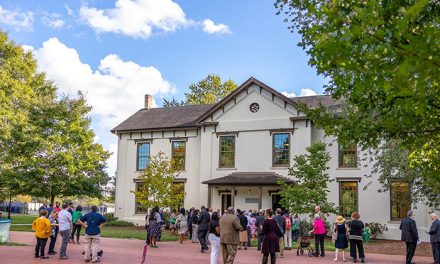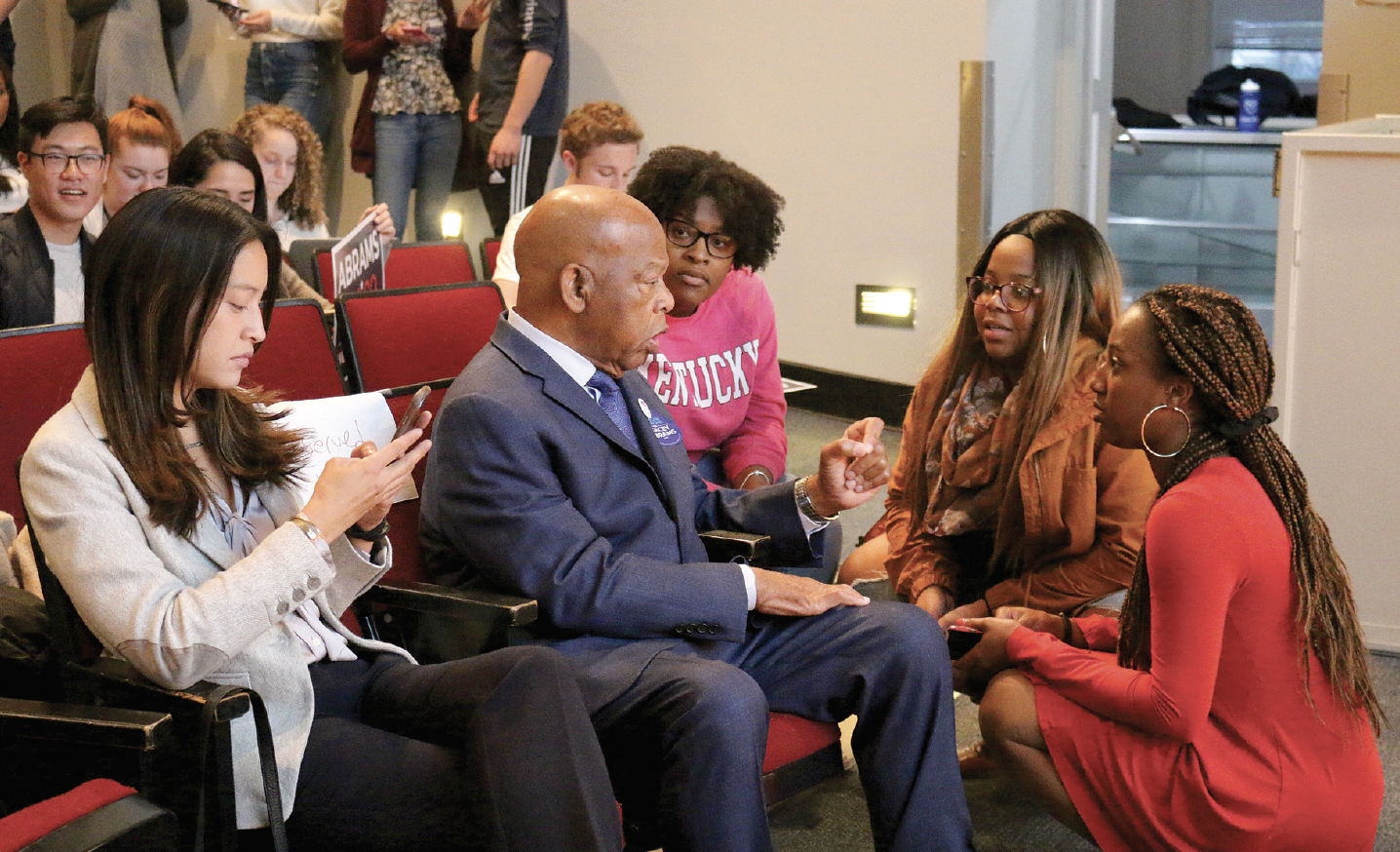The Emory-Tibet Partnership’s (ETP) 14th annual Tibet Week continues to foster discussion and debate with several diverse, educational events in Tibetan culture. The Emory-Tibet Partnership’s importance was strengthened further this week when the Dalai Lama Trust gave a $1 million grant to Emory University to support the endowment fund of The Robert A. Paul Emory-Tibet Science Initiative (ETSI), according to a press release from March 25.
The Tibet Week events included the annual sand mandala painting, daily compassion meditation, discussions on creativity, reflections on Buddhist spiritual biographies, museum gallery talks and a film screening.
The opening ceremony had an extremely high turnout with attendees standing in the back. Many of the attendees – who varied in age and knowledge about Tibetan culture – stayed afterwards to watch the beginning of the sand mandala painting, a geometric work of art made completely by the monks moving around sand particles.
Numerous Tibet Week attendees commented on the importance of the Emory-Tibet Partnership and its uniqueness. Emory is the only educational institution with a relationship to His Holiness the XIV Dalai Lama and the Tibetan monasteries.
The Grant
The Robert A. Paul ETSI was founded in 2007 as an extension to the Emory-Tibet Partnership. The initiative provides a six-year science curriculum in the three largest Tibetan monasteries in southern India. It also allowed for an exchange program between the monastery and Emory University.
The grant given to the ETSI will help strengthen Emory’s goal to promote the modern science curriculum in these monasteries.
“It is an honor and a privilege for Emory to work hand-in-hand with His Holiness on the Emory-Tibet Science Initiative,” University President James W. Wagner said in the press release. “This generous grant from the Dalai Lama Trust signifies his confidence in the work that has been done to date, and his strong and personal commitment to the ETSI’s long-term future.”
The Panel Discussion
The Tibet Week panel discussion that primarily focused on the creation of ETSI and the Dalai Lama’s dream to create a modern science curriculum in monastic education took place Wednesday night.
Geshe Lobsang Tenzin Negi, director of the Emory-Tibet Partnership and senior lecturer in the Religion Department, moderated the event. The panel featured Geshe Lhakdor la, the director of the Library of Tibetan Works and Archives, Geshe Dadul Namgyal, an auxiliary English language translator for the Dalai Lama and Carol Worthman, Emory Samuel C. Dobbs professor of Anthropology. Worthman is one of the professors that has helped with the creation of scientific material to be translated and used by the monasteries.
The panel answered numerous questions regarding the challenges of implementing a science curriculum in the monasteries and the various intricacies involved when tying Buddhist spiritual belief to modern science and empirical knowledge.
“In order to take good care of your holistic well being, you would need both modern science and Buddhist spirituality – the mind as well as the body,” Lhakdor said.
Namgyal said that he would “find himself having conversations with his Buddhist self and then his science self.”
ETSI scholars were also in attendance and commented on their experiences with the sciences.
Sonam Choephel, a Tenzin Gyatso Scholar, said that learning about modern sciences wound up influencing the way he thinks about his monastic education.
“Learning about science helped me realize that I don’t know the meaning of life,” Choephel said as the audience laughed. “Learning about science really helped me to look at my knowledge of Buddhist concepts with a completely new perspective. Each time I reexamine the concepts with new perspectives, I gain a deeper understanding.”
When asked about the conflict that could arise between science and Buddhism, the entire panel agreed that science is far from proving fact and is instead focused on exploring what is unknown. The panelists discussed that there is always a chance that ideas are wrong and that information is not finite.
“This is not a concept of winning or losing,” Lhakdor said, after playfully fighting over the microphone with Namgyal. “Knowledge is not a monopolistic good. What we do not match up on leads to further exploration. This is why the program becomes more and more enriching.”
The Creative Events
The science panel was contrasted by discussions and events based on Buddhist culture and creativity.
The week began with the initial steps toward the creation of the sand mandala painting. The monks work on the bright-colored, geometric circular sand painting for the entirety of Tibet Week. At the end of the week, the Mandala is ritually destroyed as symbol of the impermanence of life.
College freshman Ally Chung said she learned about the mandala event through an Art History class so she came to the event.
“The work that they do is so exacting,” Chung said. “They have so many geometric instruments to make sure that they get it exactly right and … I don’t think I see that in other parts of the world.”
Many students said that they were excited to watch the progression of the mandala throughout the week.
“I came to learn more about the Tibet culture,” Emily Dixon, a College sophomore, said. “I wanted to see what they do and the form of their artwork. I think [the mandala] is really cool … It’s interesting just to watch the monks use their techniques.”
The week also featured a “Creativity Conversation” in which Jon Kolkin, a photographer whose work is displayed in the Chace Gallery in the Schwartz Center for Performing Arts, and Tara Doyle, senior lecturer in the Religion department and director of the Tibetan Study program, discussed the creative process in seeking wisdom and balance in our lives.
Chas Abdel-Nabi, a College senior, said the night was a nice variance from the science-related events featured throughout Tibet Week.
“It was nice to see that they fit a creativity thing into Tibet Week as opposed to just focusing on the other programs, like the science initiative and instead had a night solely focused toward the arts,” Abdel-Nabi said.
Rita Koehler came all the way from South Bend, Ind. after receiving a flyer about the event. Having just received an M.F.A. from Lesley University College of Art and Design, Koehler said that Kolkin’s photography particularly resonated with her, due to Kolkin’s intuition and his ability to let go.
“[Kolkin] is willing to not be so rigid in his work but rather allow for things to occur or arise and move with them, rather than go in with a prescribed thought,” Koehler said. “Particularly with the mandala, it is all about working with those dichotomies of being rigid and having the prescribed piece to work with, but being free in that, and then wiping it away and letting go.”
Tibet Week highlights the work that the Emory-Tibet Partnership does throughout the year. The partnership includes various ways for the average Emory student to get involved. One option is to study abroad through the two different programs that Emory Tibet Partnership offers.
According to College junior Anna Koh, the opportunity to study abroad in Dharamsala, India was important in enabling her to meet important Tibetan figures that supplemented her courses.
“We had the chance to learn about Buddhism and ask questions to venerable monks who could answer and provide detailed explanations for concepts,” Koh said. “Through debates that occurred twice a week, we had the opportunity to exchange ideas that showed Tibetan monks’ attempt to understand science through a religious lens.”
Koh said that she also appreciated the chance to build lasting relationships with Tibetans.
College junior Lindsey Max said she agreed that the program was an incredible experience and that it helped her step outside of her comfort zone.
“To experience it firsthand and be able to share those experiences through my pictures and stories with my friends back home was invaluable to me,” Max said. “While the Dalai Lama sends monks here to study science, it is important that we send our students there to study all things Tibetan.”
According to Tenzin Bhuchung, a Tibetan Ph.D. student in the Religion department, the government’s repressive nature toward Tibetan Buddhists makes him extraordinarily grateful to Emory for hosting Tibet Week.
“Many Tibetans today are deprived of this opportunity, and there is an onslaught on Tibetan culture unceasingly coming from the communist government,” Bhuchung said. “They say that (our traditions) are backward, and you can imagine as a Tibetan living in Tibet getting this propaganda all the time with the idea that something is wrong with the traditions. When institutions like Emory do support culture events like this, it is a way to boost morale.”
– By Wendy Becker
The Emory Wheel was founded in 1919 and is currently the only independent, student-run newspaper of Emory University. The Wheel publishes weekly on Wednesdays during the academic year, except during University holidays and scheduled publication intermissions.
The Wheel is financially and editorially independent from the University. All of its content is generated by the Wheel’s more than 100 student staff members and contributing writers, and its printing costs are covered by profits from self-generated advertising sales.





